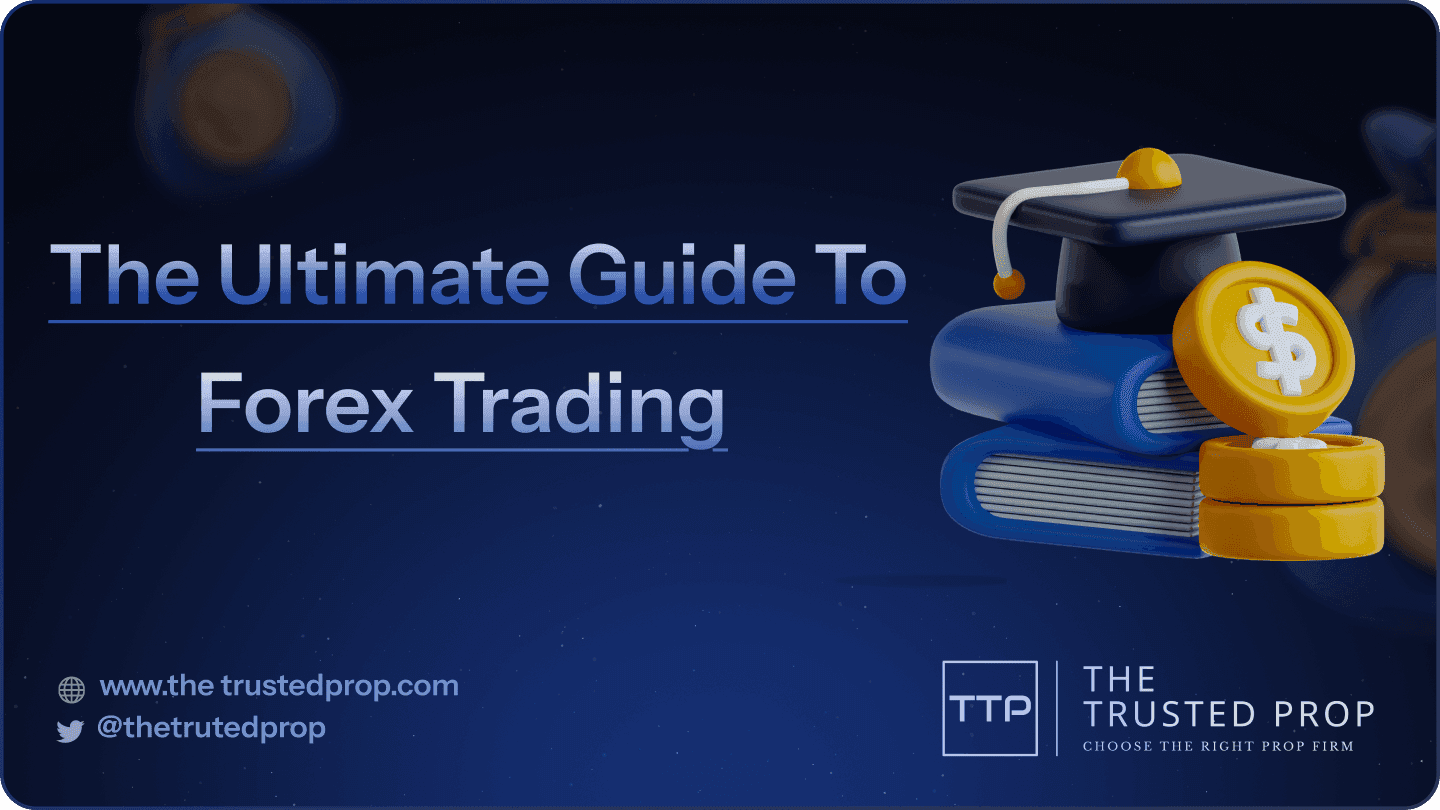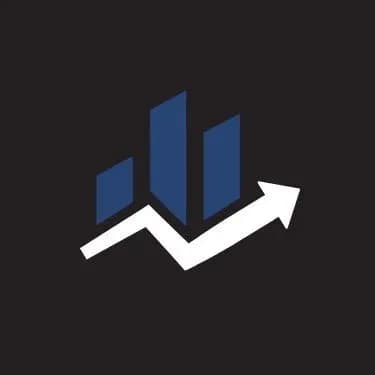The Ultimate Guide to Forex Trading Mastering the Global Currency Market

The Ultimate Guide to Forex Trading Mastering the Global Currency Market
11/25/2024
Forex trading stands as the world's largest financial market, processing over $6.6 trillion in daily trading volume. The market operates 24 hours a day, five days a week and gives traders numerous chances to buy and sell currency pairs. New traders entering the forex market need to understand currency trading fundamentals as global economic connections continue to grow stronger.
This complete guide explains everything new traders should know about forex trading fundamentals, from currency pairs to proven trading strategies. Readers will grasp how forex trading works and learn vital technical and fundamental analysis techniques while becoming skilled at risk management principles. The guide helps traders build confidence to work with major currency pairs or explore exotic options.
Understanding the Forex Market
The foreign exchange market operates through a worldwide network of computers and financial institutions without a central marketplace. This decentralized, over-the-counter (OTC) market aids electronic currency trading and connects traders across the globe through an uninterrupted network.
What is Forex?
The foreign exchange (forex) market sets currency values worldwide through trading activities. Traders buy, sell, and exchange currencies throughout the weekday. Trading follows the sun as markets open and close - starting in Asia-Pacific, flowing through Europe, and finishing in North America.
Key characteristics of the forex market include:
- A decentralized system without a physical location
- Trading happens electronically through connected terminals
- Banks, institutions and traders participate worldwide
- Markets stay active throughout the weekday
- Prices change constantly due to high market activity
Key Players in the Forex Market
The forex market has a variety of participants ranging from major institutions to individual traders. Major commercial and investment banks lead the market operations, and approximately 25 prominent banks like Deutsche Bank, UBS, and HSBC handle most of the traded volume. These financial giants execute trades regularly in parcels of 5 to 10 million dollars, while some transactions can reach between 100 to 500 million dollars.
Central banks serve a significant role through their management of monetary policy and regulation of money supply. Their foreign currency deposits, known as "reserves," are held mainly in US dollars to help stabilize domestic currency. The US dollar maintains its dominance as the world's leading reserve currency and represents about 62% of official foreign exchange reserves globally.
Forex Market Size and Liquidity
The forex market is the world's largest and most liquid financial marketplace. Daily trading volumes reach an average of USD 7.50 trillion as of April 2022. Spot transactions make up USD 2.10 trillion of this total, while forwards, swaps, and other derivatives account for USD 5.40 trillion.
London leads the global forex trading centres with a 38.1% share of all trading activity. New York follows at 19.4%, Singapore at 9.4%, and Hong Kong at 7.1%. The market's massive size and worldwide presence ensure excellent liquidity that allows traders to move large volumes without significant price changes. The trading volume consists mostly of speculative activity at over 90%, while commercial and financial transactions represent the remaining share.
Currency Pairs and Exchange Rates
Currency pairs are the foundations of successful forex trading. These pairs represent the relative value between two different currencies in the forex market.
Major, Minor, and Exotic Pairs
The forex market groups currency pairs into three main categories based on their trading volume and liquidity. Major pairs always pair the US dollar with other most important world currencies. EUR/USD stands as the most traded pair worldwide. Here's a complete list of major pairs:
| Currency Pair | Description |
|---|---|
| EUR/USD | Euro/US Dollar |
| USD/JPY | US Dollar/Japanese Yen |
| GBP/USD | British Pound/US Dollar |
| USD/CHF | US Dollar/Swiss Franc |
| AUD/USD | Australian Dollar/US Dollar |
| USD/CAD | US Dollar/Canadian Dollar |
Minor pairs, also called cross pairs, pair two major currencies without the US dollar, such as EUR/GBP or GBP/JPY. Exotic pairs match a major currency with an emerging market's currency, like USD/TRY (US Dollar/Turkish Lira).
How to Read Currency Quotes
A currency quote shows two key components: the base currency and the quote currency. You'll find the base currency listed first in the pair that equals one unit. The quote currency tells you the amount needed to purchase one unit of the base currency.
For example, if EUR/USD = 1.3600, this means:
- A single Euro (base currency) costs 1.36 US Dollars (quote currency)
- The quote has both a bid price (buying) and an ask price (selling)
- The spread represents the difference between bid and ask prices
Factors Affecting Exchange Rates
These key factors shape currency exchange rates:
- Inflation Differentials: Countries that maintain lower inflation rates usually have stronger currency values because their purchasing power increases
- Interest Rate Changes: Currencies tend to appreciate when interest rates rise as they attract more foreign capital
- Current Account Balance: A country's currency value responds directly to its trade balance
- Public Debt Levels: Foreign investors often avoid currencies from countries with substantial public deficits
- Terms of Trade: A currency strengthens when export prices improve compared to import prices
Macroeconomic variables play a crucial role in exchange rate fluctuations. Higher inflation and fiscal deficits usually create more volatile exchange rates. Countries show more stable exchange rates when they have stronger real GDP growth and open economies.
Getting Started with Forex Trading
Forex trading demands careful preparation and a thorough understanding of core components. A methodical market entry approach will substantially affect your trading success.
Choosing a Forex Broker
The right forex broker selection is significant to achieve trading success. Traders must choose brokers that respected financial authorities like the National Futures Association (NFA) and the Commodity Futures Trading Commission (CFTC) regulate 12. Reputable brokers display their NFA member numbers clearly in their "About Us" section.
The broker selection criteria include:
| Criteria | Importance |
|---|---|
| Regulation | Safety of funds |
| Trading Platform | Execution quality |
| Customer Support | 24/5 assistance |
| Cost Structure | Spreads and fees |
| Account Features | Tools and resources |
Setting Up a Trading Account
A forex trading account setup needs just a few basic documents and verification steps. You'll need your ID, address proof, and some financial details to get your application going. Most brokers will verify your account quickly - usually within 1-2 days.
Different brokers ask for different minimum deposits to start trading. Some let you begin with just USD 50, but experienced traders suggest starting with USD 2,500 to manage risks better and trade more freely. You can add money to your account through several payment options:
- Bank wire transfer
- Credit/debit cards
- Electronic payment systems
- ACH transfers
Developing a Trading Plan
A complete trading plan charts your path to forex trading success. Traders achieve better results when they stick to predefined parameters instead of making emotional decisions. The plan outlines specific goals, risk tolerance, and trading strategies.
Everything in a trading plan must include:
- Trading goals and motivation
- The timethe the commitment for trading activities
- Risk management rules
- Personal risk-reward ratio
Capital allocation strategy
Your available time for market analysis and trading shapes your approach. Day trading suits some traders while position trading offers longer-term opportunities. Your personal circumstances and trading objectives should guide your plan. Most profitable traders keep their risk limited to 1-2% of their account per trade.
Essential Forex Trading Strategies
Forex trading success depends on analytical skills and strategic thinking. Traders must become skilled in different approaches to find profitable opportunities in currency markets.
Technical Analysis Basics
Technical analysis and chart study are the foundations of forex trading decisions that help traders understand price movements and market patterns. Historical price patterns tend to repeat themselves, which forms the core belief behind this approach. Technical analysts, also known as chartists, study:
- Price action patterns and trends
- Support and resistance levels
- Chart patterns and indicators
- Volume and momentum analysis
Technical analysis helps traders identify potential entry and exit points through various tools and indicators. Price reversals often occur at key support and resistance zones, making these areas crucial for traders.
Fundamental Analysis Overview
Fundamental analysis looks at economic factors that affect currency values. Traders use this approach to understand the bigger picture and spot potential long-term trends. Several key fundamental factors shape the market:
| Economic Indicator | Impact on Currency |
|---|---|
| GDP Growth | Stronger growth typically strengthens currency |
| Interest Rates | Higher rates often attract foreign investment |
| Inflation | Lower inflation tends to support currency value |
| Employment Data | Positive employment figures strengthen currency |
Successful traders who use fundamental analysis keep track of economic calendars to monitor important data releases and central bank decisions. This strategy works well with longer-term trading plans because economic factors create lasting market trends.
Popular Forex Trading Styles
Traders choose different styles based on their personality and available time. Each trading approach needs specific analysis methods and risk management strategies.
Scalping Strategy: This style focuses on making many small profits through quick trades that last minutes. Scalpers know how to generate larger profits by collecting many smaller gains. The strategy needs:
- Continuous market monitoring
- Quick decisions
- Strict risk management rules
Day Trading: Traders open and close positions on the same trading day. They usually watch 30-minute and 1-hour time frames. Market events and news releases that affect currency prices guide their decisions.
Position Trading: The long-term approach relies heavily on fundamental factors. Position traders might open just a few trades yearly but target bigger profit margins - often hundreds of pips per trade. Success depends on:
- Patient and disciplined approach
- Strong fundamental analysis skills
- Knowing how to stay calm during market swings
A forex trading strategy works best when traders stay consistent and stick to their planned rules. Traders succeed more often when they match their style with personal risk tolerance and available time.
Managing Risk in Forex Trading
Risk management is the lifeblood of successful forex trading that determines the difference between long-term profitability and account depletion. Traders must implement resilient risk management strategies to protect their capital and maximize potential returns.
Setting Stop Losses and Take Profits
Forex traders use stop losses and take profits as their key risk management tools. These exit orders help traders create an automated risk management strategy that maintains trading discipline.
Stop losses come in two main types that protect trades differently:
- Standard Stops: These close positions once the price hits a specific level
- Trailing Stops: These stops move with profitable trades and protect gains while letting profits run
Take-profit orders work alongside stop losses and close positions automatically when trades hit profit targets. A trader who buys GBP/USD at 1.3260 with a take-profit at 1.3300 will see their position close with a 40-pip profit once the price reaches that level.
Position Sizing
Position sizing plays a key role in risk management and affects your trading results significantly. Most successful traders keep their risk between 2-3% of their total trading capital for each trade. To name just one example, see these scenarios:
| Account Size | Risk Percentage | Maximum Risk per Trade |
| $10,000 | 2% | $200 |
| $10,000 | 3% | $300 |
| $10,000 | 5% | $500 |
Traders should think about these factors when calculating position sizes:
- Account balance
- Risk percentage
- Distance to stop loss
- Pip value of the currency pair
Using Leverage Responsibly
Leverage makes your profits and losses bigger in forex trading. The forex market lets you use leverage ratios up to 100:1, but experienced traders suggest substantially lower levels. A trader can control $100,000 with just $1,000 in their account when using 100:1 leverage.
You need to think over these points to use leverage responsibly:
- Start Conservative: New traders should keep leverage at 20:1 or maybe even 10:1
- Risk Assessment: Your risk tolerance and market conditions matter
- Account Protection: You risk margin calls and account depletion with higher leverage
The best way forward is to use minimum leverage that helps you reach your trading goals while keeping enough margin buffer. A standard lot of GBP/USD (£100,000) with 5% margin requirements needs £15,000 as the original investment.
Smart risk management means you watch economic events and market conditions that affect currency volatility. Your position sizes and leverage need adjustments during high-impact news releases or when markets become uncertain.
Note that forex trading success comes from steady risk management rather than perfect entry points. Traders protect their capital better and find profitable opportunities in the forex market by setting proper stop losses, keeping suitable position sizes, and using leverage wisely.
Advanced Forex Trading Techniques
Professional forex traders use sophisticated techniques to improve their trading performance and manage risk. Their approach combines innovative technology, market knowledge, and strategic thinking to build strong trading strategies.
Algorithmic Trading
Computer programs have transformed forex trading through automation that follows preset rules. These systems, known as Expert Advisors (EAs), analyze market conditions and execute trades automatically without human intervention.
Algorithmic trading offers several advantages:
- Lightning-fast trade execution at optimal prices
- Trading decisions free from emotional bias
- Round-the-clock market surveillance
- Lower transaction costs
- Zero manual entry mistakes
Today's algorithmic trading systems feature high-frequency trading (HFT) capabilities that help traders profit from small price movements across markets. These systems process hundreds or thousands of trades every minute and substantially improve market efficiency for institutional investors.
Carry Trades
Carry trading is a widely used strategy that profits from interest rate differences between currencies. Traders borrow money in a currency with low interest rates and invest it in another currency that offers higher rates. This approach can create profits from both interest earnings and currency value increases.
| Component | Description |
| Interest-Earning | Daily interest calculated based on the rate differential |
| Leverage Impact | Returns multiplied through strategic borrowing |
| Risk Factors | Exchange rate volatility, interest rate changes |
| Popular Pairs | AUD/JPY, NZD/JPY (historically) |
Market stability and predictable interest rates play crucial roles in successful carry trades. The Japanese Yen serves as a perfect example. At the time the Bank of Japan managed to keep negative interest rates between 2016 and 2024, traders frequently used the Yen to fund their carry trades. However, this strategy ran into trouble in 2024 after Japan's rate hike triggered major market shifts.
Hedging Strategies
Strategic position management through hedging protects forex traders against unfavourable market movements. Traders of all sizes can use multiple hedging techniques to shield their portfolios from unexpected market volatility.
Direct Hedging: Taking opposing positions in the same currency pair defines this approach. U.S. regulations after 2009 restrict this practice, which forces traders to look for other hedging methods.
Correlation Hedging: Currency pair correlations offer a more advanced approach. A trader might:
- Open long positions in GBP/USD
- Take short positions in GBP/JPY
- Monitor correlation-based profit/loss patterns
Options Hedging: Options add another protective layer to forex positions. Traders buy put options to protect long positions and call options to shield short positions. A trader with a long EUR/USD position might buy put options that have a strike price below current market rates to cap potential losses.
Advanced trading techniques work best when traders implement them correctly under suitable market conditions. Market conditions change constantly, so algorithmic trading systems need regular upkeep and monitoring. Carry trades deliver optimal results in stable environments where interest rate gaps don't fluctuate much. A well-laid-out hedging strategy protects investments without putting unnecessary limits on profit potential.
Conclusion
Forex trading requires expertise in several connected elements. Traders need to understand market mechanics and use sound risk management strategies. They should know currency pair relationships, develop analytical skills, and choose trading approaches that match their goals. Technical analysis, fundamental research, and strategic planning help make informed trading decisions in the global currency market.
Education and preparation are crucial for new forex market traders. Better outcomes come to traders who learn proper risk management techniques and study market dynamics. They practice strategies through demo accounts before real trading. Success depends on disciplined execution, careful position sizing, and responsible use of leverage rather than chasing quick profits through risky trades. These principles, along with constant learning and adapting to market conditions, help traders handle the challenges of the foreign exchange market effectively.
You may also like
Instant Funding Challenge Rules, Phases & How to Pass 2026

FundedNext Stellar 1 Step Challenge explained 2025 Guide

Blue Guardian Challenge Review 2026: Rules & Fees Explained

Blue Guardian 1 Step Challenge Explained (2026 Guide)

The5ers Rules Explained Hyper Growth vs. High Stakes vs. Bootcamp

The5ers Drawdown Rules: How the 'Daily Pause' vs. 'Stop Out' Works

FORFX Flash Account Review 2026: Profit Split, Rules & Tips

No FAQs are available for this topic yet.
.jpeg&w=3840&q=75)

























